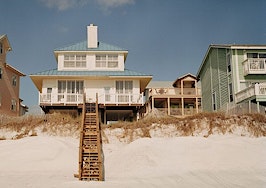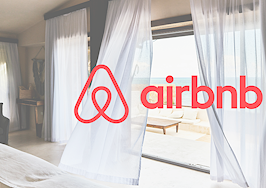In a shifting real estate market, the guidance and expertise that Inman imparts are never more valuable. Whether at our events, or with our daily news coverage and how-to journalism, we’re here to help you build your business, adopt the right tools — and make money. Join us in person in Las Vegas at Connect, and utilize your Select subscription for all the information you need to make the right decisions. When the waters get choppy, trust Inman to help you navigate.
Short-term rental investors may soon have to be pickier about where they invest, as a rush of supply has put downward pressure on occupancy rates in what has been a red-hot market.
But STR investors remain in a strong position in 2022 with high occupancy rates, rising prices for night stays and strong demand from travelers.
That’s according to a mid-year outlook report by short-term rental data bank AirDNA, which found there are now more short-term rental listings than ever and forecast more nights booked in 2022 than ever before.
“2022 should prove to be another record year for the industry,” AirDNA said in the report. “Now is the perfect time to get smarter and more creative about where you invest. For hosts and managers, think about how you can fortify your existing properties and stay ahead of the competition through strategic pricing.”
Some signs exist that the market is balancing out after a tumultuous few years. While demand plummeted during the onset of the pandemic in 2020, it rebounded the following year in favor of owners of STRs who rushed to add more supply to the market.
AirDNA now expects the rapid growth in supply to slow down, occupancy rates to decline and higher competition between STR investors to win travelers.
The company’s data shows that demand and bookings are up over 2021, a year of explosive growth. The growth in stays in short-term rentals is up 21 percent in the second quarter compared to a year before when stays had already rebounded beyond pre-pandemic highs.
STR investors have been quickly adding inventory, and AirDNA projects there will be 21 percent more listings on Airbnb and Vrbo by the end of the year.
Demand for the first five months of the year was 26.7 percent higher than 2021, which AirDNA attributes to an increase in supply. The sector is now expected to see 20.3 percent growth for the year.
But that demand could be tapered by concerns with the broader economy, AirDNA said.
“As we look to 2023, the risk of recession and slowing growth will weigh on short-term rental demand growth,” the report said. “Our expectation is that demand will grow at 5.7 percent for the year, about a quarter of the growth rate in 2022.”
AirDNA slightly revised its occupancy rate forecast downward. It expects occupancy to average 58.2 percent for 2022, down from an original forecast of 59.8 percent.
Occupancy levels fell by 9.9 percent in June compared to a year before, AirDNA says. That’s in part because 2021 was an anomaly when supply wasn’t meeting demand. After a period of rapid growth — 88,000 new short-term rentals were added in May — the market may be balancing out.
“That said, occupancy remains at historically high levels,” the report said.
Occupancy is forecast to remain fairly strong, meaning that even while inventory continues to grow, demand will remain nearly strong enough to meet supply.
Investors are capitalizing on that strong demand.
While AirDNA had forecast the average daily rate (ADR) to increase by 4.1 percent, it now expects ADRs to increase by 6.3 percent this year. That’s about half the rate of increase in 2021 when prices were quickly rebounding from severe drops during the pandemic.
The increase in ADRs should let hosts slightly increase profitability after accounting for the slight drop in occupancy and increase in home prices and financing.
Home prices remain 20 percent higher than last year and the cost of financing has doubled. That’s eaten into investors’ returns or the revenue divided by the price of the home.
Whereas investors could expect an 80 percent return last summer, they received 30 percent in May, the lowest level in four years.
ADRs are up 10.4 percent year-over-year. That growth is expected to slow to 6.3 percent by the end of the year. As occupancy rates decline and competition heats up, it may become difficult to compete without lowering prices.
“Competition to attract guests may push hosts to start lowering rates in order to maintain their share of booking activity,” the company said. “We expect ADRs to grow another 3.4% in 2023, almost half the growth rate of 2022.”
Get Inman’s Property Portfolio Newsletter delivered right to your inbox. A weekly roundup of news that real estate investors need to stay on top, delivered every Tuesday. Click here to subscribe.













